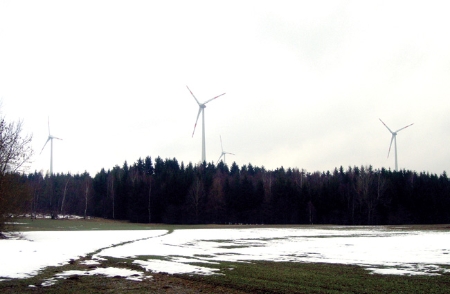The dramatic loss of summer sea ice in the Arctic has prompted a lot of research interest in the way that this is affecting weather patterns around the northern hemisphere. The latest contribution is Influence of Arctic sea ice on European summer precipitation, by Dr James Screen of the University of Exeter [PhysOrg]. In this “video abstract”, he explains how reductions in Arctic sea ice affect the position of jetstream — the ribbon of winds winding around the planet that guides weather systems — bringing more summer storms to Western Europe, and a recent run of record-setting wet summers to the UK. But as he points out, the effects are planet-wide:
The impacts are not just over northwest Europe. Actually in the model, what we find is that whilst the sea ice loss increases rainfall over northwest Europe, we actually find drier conditions over Mediterranean Europe. Also the jet steam shifts over North America, which can have implications for the weather there too.
Dr Screen’s study underlines a point that I have been making for some time: rapid climate change is not something theoretical that will happen in the future — it’s happening now and we’re feeling the effects. Warming in the Arctic is driving sea ice loss, and the atmospheric consequences are changing the shape of the weather right round the northern half of the planet.
Also interesting, and also looking at jetstream patterns is Probability of US heat waves affected by a subseasonal planetary wave pattern, in which the authors find that US heatwaves might be predictable 15-20 days earlier than at present by monitoring a particular jetstream wave pattern. [Science Daily]
It’s worth noting that an especially vigorous jetstream directed and helped to intensify the recent huge European storm that hammered the UK, Germany and Denmark, killing 16 people and causing huge amounts of damage. Christopher Burt at WeatherUnderground provides a handy overview of the storm that has four names — St Jude, Christian, Simone and Carmen. The storm centre moved 2,000 km in 26 hours, a remarkable pace of 77 kph.

 I took
I took  In search of something cheering in the face of the depressing news of continuing increases in the levels of greenhouse gas emissions I found my way to the website of
In search of something cheering in the face of the depressing news of continuing increases in the levels of greenhouse gas emissions I found my way to the website of  I’ve become wary of politicians’ commitments to clean energy, having been disappointed by the rapidity with which the rhetoric of leaders like Obama or Rudd loses substance when the political going gets tough. But it was hard not to pay attention to a striking
I’ve become wary of politicians’ commitments to clean energy, having been disappointed by the rapidity with which the rhetoric of leaders like Obama or Rudd loses substance when the political going gets tough. But it was hard not to pay attention to a striking